
views
Finding Things to Write About

Describe your present moment. The most common way to write in a diary is to talk about your day. But don’t feel like you need to start at the beginning and discuss every single aspect of your day. Try simply describing your present moment in as much detail as possible. Staying present is a great way to keep from getting bored. What is the weather like? Is it warm or is it cold? Where are you? What people do you see currently? How are you feeling? Are you daydreaming about anything right now?

Start a daily gratitude list. You can use your journal to work on generating gratitude in your life, and building a positive outlook. Create a list of things you are grateful for each day (aim for five). Your list can be a simple set of phrases, or you can expand on any item in more detail. Gratitude can give you new things to contemplate and write about. Stay grateful and keep boredom at bay. You might be grateful for your friends and family. You might be grateful for your health and abilities. You might be grateful for a new opportunity.

Create self-portraits. A fun way to record your life and keep it interesting is to create daily (or weekly) self-portraits. You can generate a portrait of yourself using a photograph, drawing, or even using words. By creating an artistic snapshot of yourself, you can capture your life at this moment. This fun activity will keep you interested in your diary and stave off feelings of tedium. You can take a selfie with your phone, print it out, and glue it into your diary. You can look in the mirror and use colored pencils to draw your face. You can draw a simple picture of the outfit you are wearing. Include arrows to different clothing pieces and talk about where you got them.
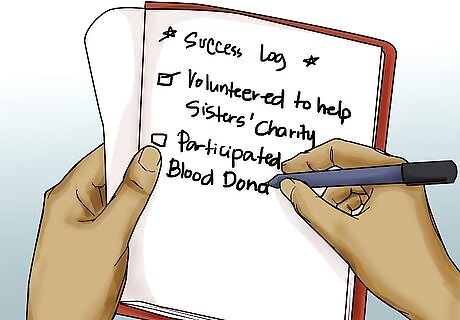
Maintain a success log. Another way to cultivate a positive outlook and keep yourself interested in your diary is to create a success log. We often make lists of all the things we need to do, but rarely do we make them for what we’ve done. Use your diary to create a list of your accomplishments, both big and small, and maintain your enthusiasm for journaling. These can be anything from going to the gym five times in one week to winning an important scholarship. This may be a cohesive list on the inside cover of your diary, or you can create an individual post for each success.

Use your diary to work out your anger. A diary is an excellent place to work out negative emotions. If you feel anger, frustration, shame, or disappointment, writing in your diary is a private way to process what you are going through. It may also be a good way to plan what you will say to someone else, so that you can talk to them calmly. Plus, this is never boring! You might say, "I am burning up with rage right now. Jennifer is supposed to be my friend, but she doesn't act like it." You might say, "I am really disappointing. I thought I would get an A on my essay, but I actually got a B-. I did my best, but it wasn't good enough."
Exploring Writing Strategies

Write in the third person. If you are looking to spice things up for yourself, you may try writing about yourself and your life in the third person. This means to describe what is happening as if you were an outside narrator. This activity can stimulate creativity, and may help you get a different perspective on your life for a moment. Best of all, it can push away feeling of tedium or boredom. For example, instead of saying “I woke around 8 and went for a walk,” you would say, “Kelly woke up around 8 and went for a walk. She was pleased to start her day with the sun.”
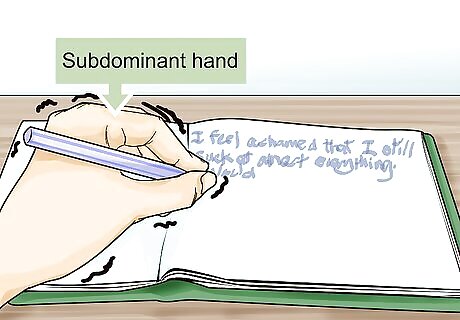
Write with your subdominant hand. Another interesting writing activity is to write with the hand that you don't normally write with (your subdominant hand). This slowed way of communicating can help generate unique thoughts, and boost your enthusiasm for writing in your diary.. You may try having a conversation with yourself by asking questions with your dominant hand, and answering them with your other hand.
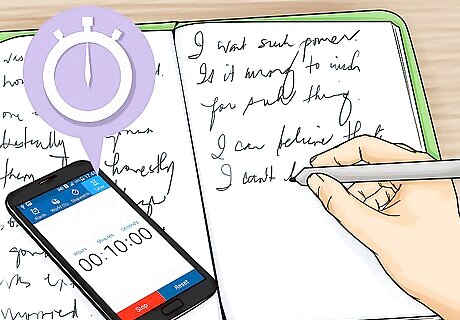
Use stream of consciousness writing. One of the best ways to beat a writing rut is to use stream of consciousness writing. Set a timer for ten minutes (to start), sit down, and start writing. Do not allow yourself to stop, edit, or even think. Just let the words flow for ten full minutes. This is a great way to clear out the clutter, and keep you from getting bored. Plus, you may be surprised by what you create. An activity called “morning pages” advocates for writing 3 hand-written pages every morning to de-clutter your thoughts and open up your creative pathways.
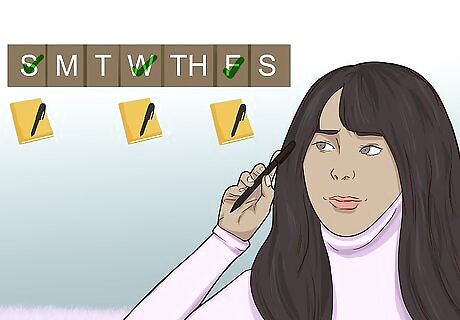
Skip days. Some people may benefit from a daily writing schedule, while for others this will surely generate boredom. So give yourself a break. Perhaps aim to create 3 diary entries per week. Or just let yourself off the hook when you need to. A diary works best if you commit to it, but you should not make it a chore.

Make lists. List-making is a fun writing strategy to get your creative juices flowing. Beyond making lists of what you are grateful for, or what you’ve accomplished, you can expand this to create lists about almost anything. This a fun way to keep writing without feeling dull. Looking back, you will be surprised how well these lists describe you and capture a moment in your life. List everything you ate that day. List your ten favorite activities. List five things you like about yourself and five things you don’t like. List you five favorite songs or albums. List every time you’ve been on an airplane. List five hopes you have for the future.
Using the Right Materials
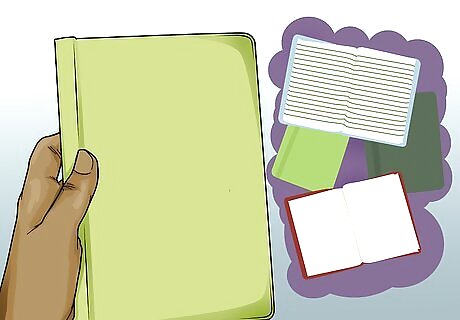
Find a diary you like. If you want to commit to a diary practice and avoid getting bored, then you need to start with a diary you like. For some people this might be a simple composition notebook, for others a nice leather-bound journal is what you need. Look for a diary, notebook, or journal that you connect with, and start writing. Diaries and journals are often sold at bookstores and greeting card stores. Various styles of notebooks can be found at office supply stores. Try checking out unlined sketchbooks. You can find these at art supply stores.
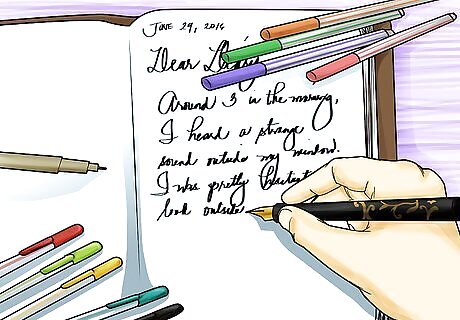
Use nice writing utensils. In addition to finding a diary that you like, you need to figure out which writing materials work best for you. Maybe you are happy with a ballpoint pen, or maybe you like gel pens. Perhaps you need to use lots of colors so a set of nice colored pens, or even colored pencils is more your speed. Try out different writing utensils until you find your perfect fit, and keep yourself interested.
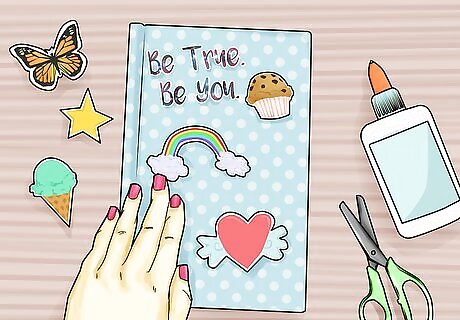
Personalize your diary. Another way to connect with your diary (and keep the boredom away) is to personalize it! Glue images or stickers to the outside or write inspirational quotes on the inside. Find a way to make it your own! If you don’t want to spend a lot of money on a fancy journal, pick up a cheap notebook and make it beautiful.

Use mixed materials. A great way to keep yourself from getting bored with your diary is to use mixed materials. This can mean using crayon, colored pencils, or paints. Or this can mean attaching mementoes from your life to some of the pages (like a scrapbook). Using a variety of materials is a fun way to document your life that can keep you from getting bored.



















Comments
0 comment